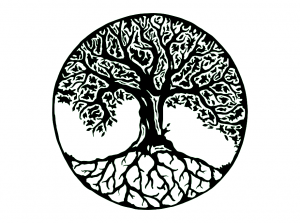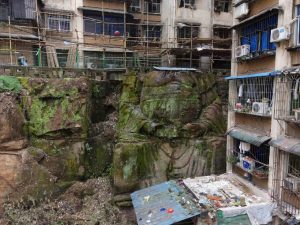
Many people worldwide do not give credence to astrology or planetary influences on human beings and earthly life. However, I doubt I am the only one to have recently noticed the intensity of experience, particularly between the October and April eclipses, but also around the recent “pink” full moon in Scorpio on 23 April. For meditators, we closely tune into not only our body, breath, and immediate environment, but also to the larger landscape of the world.
In working with children, it is clear how attuned they are to their environment. Changes brought on by seasonal and planetary fluxes affect them. The younger they are the more obvious it is to observe their relationship with the Moon, the seasons, and the weather. We often think it is only sugar or television that affect their moods or capacity to learn and follow adult instructions, but children and humans are animals in essence and we do still all relate to the wilds and the weathers, whether internal or external, whether or not we are aware of it.

Spring is a glorious time and a perfect opportunity to reinvest our meditation practice with fresh air—perhaps literally by practicing outdoors on the porch or in the forest. Even if we are stuck in a parking lot between errands, we can open the car window and breathe in some fresh air, see a bit of blue sky and beautiful clouds for a few moments before we rush off to the next thing.
In working with young children, spring is a time to see how naturally re-energized they are for learning and play, as well as deepening their social structures within the classroom or playground. I recently had a meeting with several parents, and because they knew I was the Dharma teacher one father said, “Oh, I’ll be sure to meditate more!” I’m not sure if he was joking or not but my response was, “Oh, me too!” Both parents and teachers know that we also need time for rejuvenation when we’re so busy teaching, parenting, and caregiving that we lack the time we need to fill our own proverbial cup.

In leading a recent parent meditation group, we shared about the need for permission to fully be as we are—not as we wish we were. One example of this is a person who shared that they really wanted to be better at meditation. I responded that after years of formal meditation and long retreats and engaging in the traditional practices, I have come to understand more deeply that what is “better meditation” is allowing things to be the way they are: in our body, our feelings, and our thoughts, as well as in the outer world. It is so easy to sit and think “I should not have these thoughts,” etc., but the struggle comes really from the wish that it be other than it is.
If we are in a human body, we have these thoughts and impulses, we have bodily sensations and needs. They are not an issue or a problem in themselves. Our grasping or aversion to them creates all the trouble! It is a little bit like when we are arguing with someone, and we suddenly realize we have the same point of view. We were on the same side, but we became attached to the sense that we were isolated or opposed.

Similarly, in meditation we do not need to have our mind and our body in opposition. Even if we have judgments or thoughts about how it should be different, if we merely soften that a little bit we can relax internally. Deepening our breath or sitting up a little taller can release us from the constant internal pressure that we exert on ourselves. Then we can let go a little bit into a state of acceptance. We allow a bit more empathy and compassion in: first for ourselves and then radiating out to all other people and beings.
This is the heart of Dharma, this is the heart of meditation—the acceptance and willingness to be who we are and, as one of my teachers put it, to realize our true self. This has nothing to do with self-care or workshops or reading more books or gathering more knowledge. It is more about letting go of our preconceived notions and our inner and outer judgments of who or what we should be, to accept who we actually are and how the world is.

In a parent-and-teacher meeting this week—as in many—I was heartened to find a greater level of acceptance and empathy between the adults. In speaking of a particular child and how to help them manage their own thoughts and behaviors and emotions, alone and in a group, we found connection to our inner selves as well, past and present. We were all struggling children once. We are all trying to grow and mature, whether we’re five years old, 15, or 45, we are all trying to become who we truly are: someone in harmony with ourselves and with our communities.
This will be less of a struggle if we can, first of all, admit how things are actually at the moment and find some grace and forgiveness in knowing that so many factors collide to make us who we are. A wish and our hope that it might be improved or better first can be softened with the acceptance of how things actually are. From that point, we can envision and co-create and make things better, especially for others! This is the heart of Buddhism and Buddhist practice—the wish that others be happy. We are not excluded but we are not more or less important than other sentient beings. Our meditation, our prayers, our wishes, and our activities in work and play are all geared toward this motivation: how to bring happiness and freedom from suffering for other beings, be they human or non-human. May all beings experience the renewal of spring-like joy, beauty, and nourishment.
Related features from BDG
Buddhistdoor View: Here Be Dragons – A Year of Transformation and Thunderstorms
Walking Down the Road
Looking Afresh – At the World, Art, and Ourselves
Understanding Buddhist Astrology: An Interview with Dr. Jeffrey Kotyk












